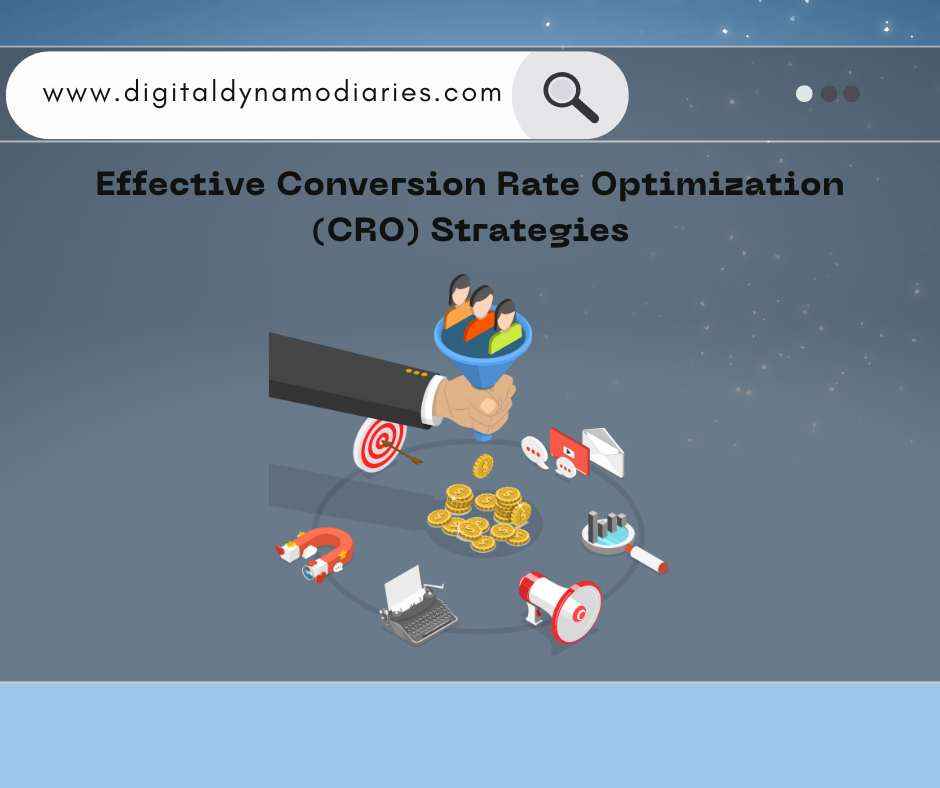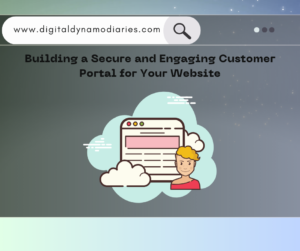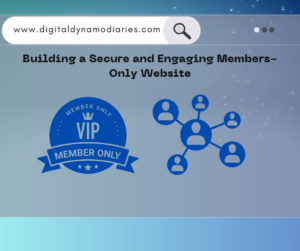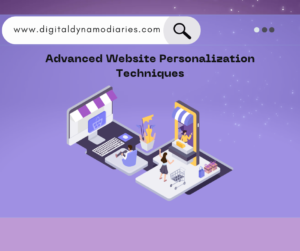Effective Conversion Rate Optimization (CRO) Strategies
What is Conversion Rate Optimization (CRO)?
Conversion Rate Optimization (CRO) is the art and science of enhancing your website’s performance by increasing the percentage of visitors who complete a desired action. This action could be anything from making a purchase and signing up for a newsletter to filling out a contact form or downloading an eBook. In a digital landscape where competition is fierce, CRO is not just an option, it’s a necessity for businesses that aim to maximize their return on investment (ROI) from existing web traffic.
CRO is about making your website more efficient. Instead of spending more on advertising to drive additional traffic, CRO focuses on getting more value from your current visitors. By understanding user behavior, streamlining user experiences, and optimizing key elements of your website, you can turn casual browsers into engaged customers.
The Importance of Conversion Rate Optimization (CRO)
The significance of CRO extends far beyond improving individual metrics; it directly impacts your business’s bottom line. Here’s why CRO is indispensable:
1. Increased Revenue: A higher conversion rate translates directly into more revenue. Even small improvements can lead to significant financial gains.
2. Better ROI: CRO ensures that your marketing efforts yield the highest possible return, making your ad spend more effective.
3. Enhanced User Experience: A focus on CRO often leads to improvements in the overall user experience, reducing bounce rates and increasing customer satisfaction.
4. Sustainable Growth: CRO helps build a loyal customer base, fostering long-term growth rather than short-term spikes.
Key Elements of Conversion Rate Optimization (CRO)
CRO is a multifaceted process that involves various elements working in harmony. Here’s a closer look at the foundational components:
1. Understanding Your Audience
The first step in CRO is gaining a deep understanding of your audience. Who are they? What are their needs, preferences, and pain points? What motivates them to take action?
To gather these insights, you can use:
- Google Analytics: Provides data on user demographics, behavior, and traffic sources.
- Heatmaps: Show where users are clicking, scrolling, and spending the most time on your website.
- User Surveys and Feedback: Offer direct insights into what users like and dislike about your website.
2. Improving User Experience (UX)
User Experience (UX) is a critical factor in CRO. A website that is difficult to navigate, slow to load, or cluttered with irrelevant information will frustrate users, causing them to leave without converting.
Key areas to focus on include:
- Navigation: Ensure that your website is intuitive to navigate. Use clear, descriptive labels and a logical hierarchy.
- Mobile Optimization: With a significant portion of traffic coming from mobile devices, your website must be fully responsive, offering a seamless experience across all devices.
- Load Times: Speed is crucial. Studies show that even a one-second delay in page load time can reduce conversions by 7%. Use tools like Google PageSpeed Insights to optimize your site’s performance.
- Content Clarity: Content should be easy to read and understand. Avoid jargon and keep your messaging clear and concise.
A positive user experience reduces friction and keeps users engaged, increasing the likelihood of conversion.
3. Compelling Call to Action (CTA)
Your Call to Action (CTA) is the most direct way to guide users toward conversion. A well-designed CTA should be:
- Clear: Users should instantly understand what action they are being asked to take. Use direct, action-oriented language like “Download Now,” “Sign Up Today,” or “Get Your Free Quote”.
- Visible: The CTA should be prominent on the page, using contrasting colors and bold fonts to stand out.
- Persuasive: Use persuasive language that conveys urgency or highlights the benefits of taking action. For example, “Limited Time Offer” or “Join Thousands of Satisfied Customers”.
The placement of your CTA is equally important. It should be strategically placed where users are most likely to take action, such as above the fold or at the end of a compelling piece of content.
4. A/B Testing
A/B testing is a critical component of CRO. It involves creating two versions of a webpage (Version A and Version B) with one varying element, such as a headline, image, or CTA, and testing which version performs better.
Key aspects to consider when A/B testing:
Hypothesis Development: Start with a clear hypothesis. For example, “Changing the color of the CTA button from green to red will increase conversions”.
- Testing Elements: Test one element at a time to accurately measure its impact. Common elements to test include headlines, images, CTAs, form fields, and page layouts.
- Statistical Significance: Ensure that your test runs long enough to achieve statistical significance, meaning that the results are not due to random chance.
- Continuous Testing: A/B testing is not a one-time process. Continuously test and refine different elements to keep improving your conversion rates.
By making decisions based on data rather than assumptions, A/B testing allows you to optimize your website with precision and confidence.
5. Optimizing Landing Pages
Landing pages are often the first interaction users have with your brand. An optimized landing page can significantly increase conversions.
Effective landing pages should:
- Align with User Intent: Ensure that the content of your landing page matches the intent of the user. For example, if a user clicks on an ad for a specific product, they should be directed to a landing page that focuses solely on that product.
- Focus on One Goal: Each landing page should have a single, clear goal, whether it’s capturing email addresses, driving sales, or promoting a download. Avoid cluttering the page with multiple CTAs.
- Use Social Proof: Incorporate testimonials, reviews, or case studies to build trust and credibility.
- Minimize Distractions: Remove any unnecessary elements that could divert attention from the main CTA.
A well-designed landing page can effectively guide users through the conversion process, making it easier for them to take the desired action.
Strategies for Effective Conversion Rate Optimization (CRO)
Once the foundational elements are in place, you can implement advanced strategies to further enhance your conversion rates:
1. Personalization
Personalization involves tailoring your website content and offers to individual users based on their behavior, preferences, and past interactions.
Ways to personalize your website include:
- Dynamic Content: Show different content based on user segments. For example, returning visitors might see a personalized welcome message, while first-time visitors see an introductory offer.
- Behavioral Triggers: Use tools like retargeting ads or email marketing to engage users based on their previous interactions with your site.
- Product Recommendations: Suggest products or services based on a user’s browsing history or previous purchases.
Personalization creates a more relevant and engaging experience for users, making them more likely to convert.
2. Social Proof
Social proof is a powerful psychological trigger that influences user behavior. When potential customers see that others have had positive experiences with your brand, they are more likely to trust you and take action.
Incorporate social proof through:
- Customer Testimonials: Showcase positive feedback from satisfied customers.
- Case Studies: Share detailed examples of how your product or service has helped other customers achieve their goals.
- User Reviews and Ratings: Display reviews and ratings prominently on product pages.
- Social Media Mentions: Highlight positive mentions of your brand on social media.
By leveraging social proof, you can build credibility and reassure potential customers that they are making the right decision.
3. Reducing Friction
Friction refers to any obstacles that make it difficult for users to complete a desired action. Reducing friction is crucial for improving conversion rates.
Common sources of friction include:
- Complex Checkout Processes: Simplify your checkout process by minimizing the number of steps and offering guest checkout options.
- Long Forms: Reduce the number of fields in forms to only what is absolutely necessary. Consider using autofill options to speed up the process.
- Mandatory Account Creation: Allow users to complete transactions without creating an account, or offer the option to create an account after the purchase is complete.
- Slow Load Times: Optimize your site’s speed to ensure quick load times, especially on mobile devices.
By removing these barriers, you make it easier for users to convert, leading to higher conversion rates.
4. Leveraging Urgency and Scarcity
Urgency and scarcity are powerful psychological triggers that can drive users to take action more quickly.
Tactics to create urgency and scarcity include:
- Limited-Time Offers: Use countdown timers or limited-time promotions to create a sense of urgency.
- Low Stock Alerts: Display messages indicating low stock levels to create a sense of scarcity and encourage immediate purchases.
- Flash Sales: Offer short-term sales or discounts that require quick action.
However, it’s important to use these tactics authentically. Overuse or manipulation can lead to distrust and harm your brand’s reputation.
Tracking and Analyzing Conversion Rate Optimization (CRO) Success
To determine the effectiveness of your CRO strategies, it’s essential to track and analyze key metrics regularly. Important metrics to monitor include:
1. Conversion Rate: The percentage of visitors who complete the desired action.
2. Bounce Rate: The percentage of visitors who leave your website after viewing only one page.
3. Average Session Duration: The average amount of time users spend on your site.
4. Cart Abandonment Rate: The percentage of users who add items to their cart but do not complete the purchase.
5. Customer Lifetime Value (CLTV): The total revenue a business can expect from a customer over the course of their relationship.
Conclusion
Conversion Rate Optimization is not a one-time project; it’s an ongoing process of testing, learning, and improving. By focusing on understanding your audience, enhancing user experience, crafting compelling CTAs, and implementing advanced strategies, you can significantly boost your website’s performance and drive sustainable growth.



